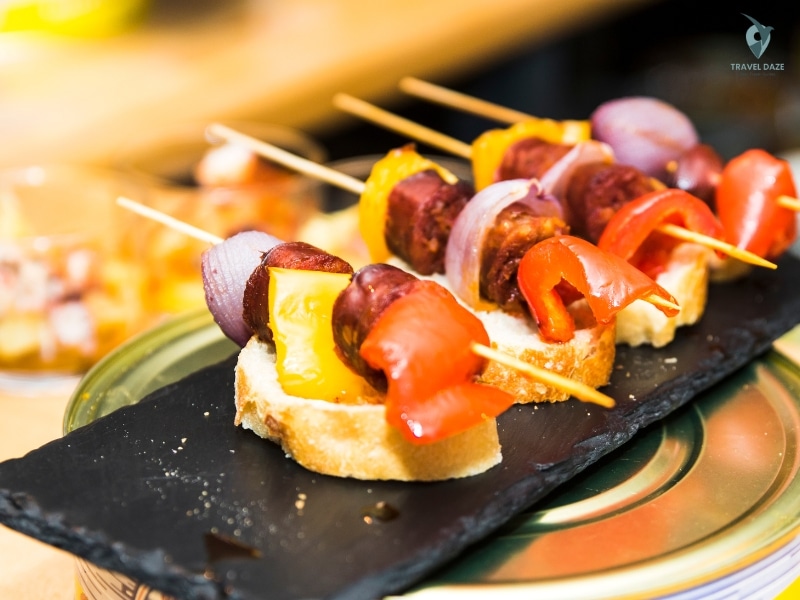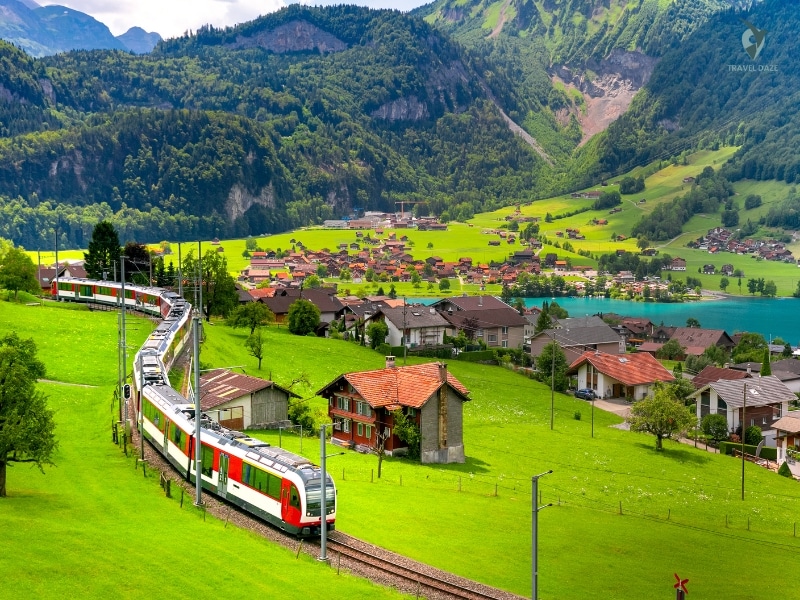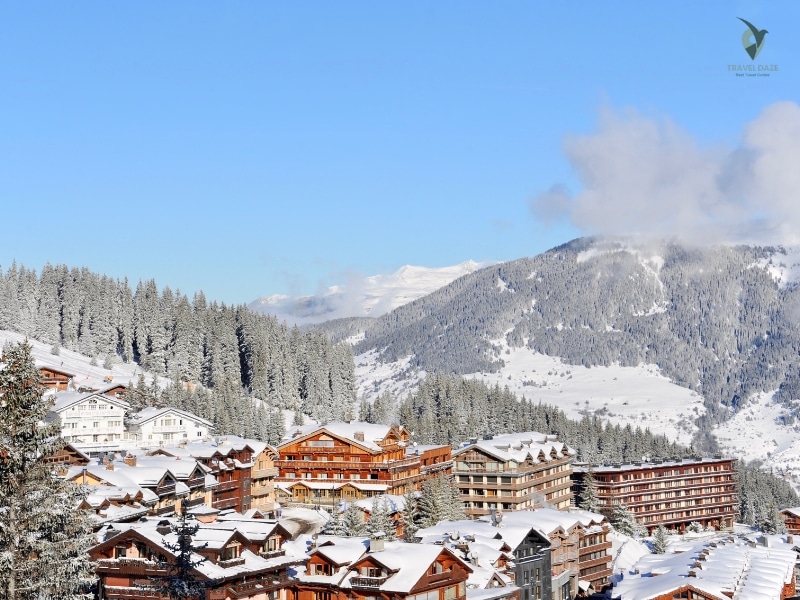I landed on the windy shore ready to map out the best things essaouira has to offer—salt air, blue boats, and a compact medina that invites slow wandering. The UNESCO-listed old town is a short stroll from the port; cannon-lined ramparts frame sunsets that turn the harbor gold.
Table of Contents
ToggleI write from the perspective of someone who times visits and picks spots by light, crowds, and safety. You’ll find where to sip mint tea with a view, taste fresh argan treats, and catch beach wind for kitesurfing or calm morning rides.
I pair practical tips—entry fees, when to avoid high winds, and ethical notes on riding & quad biking—with local rhythm. Expect clear steps for a well-paced day: neighborhoods first, then the shore, then a soothing hammam to finish.
Key Takeaways
- Plan mornings for calm surf lessons and late-afternoons for golden light by the port.
- Bring windproof layers—July–August is peak wind season for kitesurfing.
- Try mint tea at a rooftop cafe near the medina for the best views.
- Choose certified co-ops for argan tastings and ethical animal activities.
- Book gear and guided quad biking with clear safety briefings and helmets.
Wander the UNESCO-listed medina and feel its sea-breezy rhythm
I step through the medina gate and the sea breeze leads me down sun-washed lanes. The late 18th-century grid is mostly pedestrian, so walking feels easy and safe. It’s a UNESCO World Heritage spot with blue doors and whitewashed walls that pop under soft light.
Give yourself time to get lost on purpose—then find your way without stress. Pop into artisan lanes for baskets, ceramics, and music shops. Always ask before photographing people; a smile goes a long way.
- Enter early: I like mornings when shutters open and the air is clean.
- Seek blue doors: Mid-morning light brings out the color—one best angle faces west along the cannon-lined ramparts.
- Walk along Rue Skala to reach the ramparts; it’s the prettiest route past craft stalls. Ramparts open 9am to just after sunset and are free.
- Watch the wind: Secure hats & phone grips atop the walls, especially near the beach-side outlooks.
- Midday: Take a snack break—alleys offer shade and quieter corners.
Cultural experiences in Essaouira

You feel the place before you name it: salt on your lips, a drumbeat around the corner, and wide sky over the sand. History sits beside music here—old ramparts, Gnawa rhythms, and sea light that changes moods by the hour.
I wander between open squares and quiet cafés, following riffs and friendly nods. Summer winds fuel kitesurfing; when the bay howls, I swap the shore for galleries or a relaxed rooftop.
Assafi’s dunes flicker like a different world—short taxi, quick walk, and you’re among raw ridges of sand. Southward, Sidi Kaouki offers gentler breakers for a calm lesson and softer beach time.
- Plan a mixed day: medina browsing, a surf class, then rampart light.
- Watch the tide: pick firm sand for long walks and safe returns.
- Try a quad: one bold ride through coastal trails makes the one best things memory.
Follow the ramparts to the Atlantic and watch waves batter the walls
At the top of Rue Skala a stone arch frames the sky, and I head up toward the ramparts. The path slopes steady—open from 9am to just after sunset and free to enter—so I time visits for softer light and fewer crowds.
The ramparts are a walk along a row of old cannon silhouettes. Below, the atlantic ocean roars and waves slam the stone, misting lenses and sunglasses. Winds funnel through turret windows; hold hats tight and keep kids inside the inner wall line.
Skala de la Ville access, wind warnings, and the best viewpoints
I reach the ramparts from Rue Skala, then climb to salt spray and cannon silhouettes. For calmer frames I shield my camera behind the stone, then step out for wide views toward the beach and horizon.
- Walk along the cannon row toward the end for the longest coastal perspective.
- Mid-afternoon softens glare on the sea; late light warms honey-stone textures—prime time for photos.
- If the wind howls, shoot low angles with elbows braced on the wall and exit before full dark—the city lanes feel gentler while there’s still color in the sky.
Step into Sqala du Port for honey-stone arches and sweeping harbor views
I climb the honey-stone steps at the harbor to reach a row of arches that frame the water and the city beyond. The sqala port opens roughly 9am–5pm, and the recent reopening lists an entry fee of DH60.
Buy your ticket at the gate, then ascend to lookout points where a round stone opening perfectly frames the medina. Steps beside the circle help photographers line up balanced shots—I use them for low angles and to steady my camera.
How to enter, ticket notes, and that iconic stone-circle photo spot
Time your visit for the opening hour or late afternoon to avoid midday groups and harsh light. When wind picks up I tuck behind an arch for steady gear changes and safer frames.
- Watch footing: worn stone gets slick with sea spray—bring grippy soles.
- Game thrones fans: you’ll spot familiar bastion angles along the quay.
- After the sqala: wander the quay for close-up boat details before you head back into the medina or down to the beach.
Immerse in port life: blue boats, gulls overhead, and the scent of salt and fish

I slip through the citadel gate and follow a tangle of ropes and planks toward the working quay. The bigger fish market by Bab El Marsa sells the catch loud and fast—nets, repairs, and gulls wheel above.
Expect strong smells of diesel and sea, slick steps, and areas with building works. I keep clear of active zones; this place moves fast in tight ways. For safety, I mind port carts and step aside near the end of the quay.
Walk-through route, respectful etiquette, and where to linger for photos
From the bastion gate I drift toward blue boats bobbing on a chopped-up sea. You’ll find men repairing nets, shouting prices, and hauling crates of fish on planks.
- Ask first: request permission for close-up portraits and tip if someone pauses work for your shot.
- Where to linger: stacked crates make great frames—color, texture, and hands tell the story best.
- Grill on-site: point to the fish you want, agree a fair price, and confirm weight before they cook.
At the end I cut back toward the medina for shade and a reset—fresh air, fewer crowds, and time to sort photos before heading to the sqala port or beach.
Taste the day’s catch at the fish market—then have it grilled on the spot
I follow the smoke from the quay and land at a row of sizzling grills where the day’s catch goes straight from sea to plate. This is where the real market hums—raw, quick, and honest.
Head for Bab El Marsa; it’s the best place for freshness and fairer deals. Avoid the tourist stalls near Bab Doukkala if you want value and real flavor.
Ask to see the fish and check for firm eyes, bright gills, and an ocean-clean smell. Confirm the price by kilo, the grill fee, and any sides before they start cooking—no surprises at the end.
- Order smart: sardines or a mixed grill with squid, hake, and prawns are staples I pick.
- Follow the smoke: locals flock to the busiest grills—skip pushy touts and join the line.
- Pack small change: quick payments keep the process smooth; eat standing if seats fill—it’s part of the buzz near the beach.
Slow down with mint tea at Moulay Hassan Square and people-watch
I pull a chair at Moulay Hassan Square and let the evening unfurl—guitars, gulls, and slow conversations. The square sits by the medina and near the seafront, so you get surf air with every cup.
One sip of mint tea and I watch buskers gather at dusk. Crepes sell for 15 MAD—Nutella lines move fast, and they hit the spot after a long day on the sand.
Crepes worth the line, sunset café picks, and the evening street scene
I favor rooftops like Taros or Il Mare for sunset light, then drop to the square for performers at the end of the show. When wind bites, I pick a leeward table and stay cozy.
- I grab tea curbside and watch guitars trade riffs with the gulls.
- After a beach stroll, this pause resets energy for the evening; if I’ve booked a hammam, I keep snacks light.
- Cafés are great for journaling—I tip small coins, snap distant people photos, then wander back into the medina.
Practical tip: sit where you can see the quay and the crowd; that place makes it easy to time night plans and enjoy the last light before the day ends.
Trace Essaouira’s layered past in the Jewish Quarter
I slip into the Mellah and the street sounds soften; the lanes feel like a slow museum. Restoration sits beside decay—painted shutters, crumbling plaster, and small plaques that tell a short story.
For a calm visit, head first to the Haim Pinto Synagogue. It allows tourist visits—dress modestly, speak softly, and respect the worship space. If a service is underway, step back and wait.
Quiet alleys, synagogues, and visiting the cemetery with care
The Jewish cemetery lies past Bab Doukkala. I time my walk for daytime—doors close on Sundays and evenings, and entry is usually free when open. The adjacent Christian cemetery shows how the city’s faiths overlap; read the markers slowly.
- I enter the Mellah softly; voices carry in still alleys here.
- Visit Haim Pinto Synagogue with respect—modest dress and hushed tones.
- I time the cemetery visit for daytime; the door can be closed later.
- No photos of mourners; I avoid stepping on graves and keep distance.
- This quarter shows interwoven faiths—slow down and read plaques.
- I carry small bills for a caretaker donation if offered.
- Side streets feel raw—watch footing near crumbling corners.
- Use a guide map to loop back to brighter medina lanes with ease.
Walk the Walk of Punishment: Game of Thrones locations that feel cinematic
Here the city becomes a set: weathered stone, low arches, and a wind that edits every frame. I trace the spots where crews shot Astapor scenes and plan shots that feel staged but real.
Ramparts, Sqala du Port, and how to time the light for dramatic shots
I scout the ramparts mid-afternoon, then return as light tilts low—golden hour flatters honey stone and sharpens views. The cannons line up like natural focal points; when they point to the atlantic ocean, you get that wide, cinematic sweep.
At the sqala port I shoot the arches and the stone-circle view before gates close around 5pm. Winds channel through turret windows, so I secure gear and keep a microfiber cloth handy—sea spray fogs lenses fast.
- I use the wall to steady sunset shots and frame silhouettes when crowds gather.
- Shoot blue boats for color contrast; golden hour makes textures sing.
- Night falls quickly—wrap on time and head for a nearby dinner to keep plans flexible.
Embrace the beach vibe: wind, wide sands, and nightly sunsets over the sea
I stroll the wide strand at dusk and let the wind set the tempo for the evening. The promenade runs about 2km and frames long walks, quick snacks, and rooftop light shows.
Best spots: Essaouira Beach, Assafi’s dunes, and rooftop viewpoints

Essaouira Beach is one best things at sunset—sunbeds sit near the medina for ~25 MAD. The atlantic ocean swallows the sun and gives wide, soft views.
Assafi’s dunes feel like the end of the world—raw dunes, rock pools, no facilities. Beach bars at the far end include Ocean Vagabond and Beach & Friends. Rooftops near the shore frame pastel skies and lanterns.
What to pack for breezy days so you actually enjoy the sand
- I pack a windbreaker, cap with strap, and sunglasses—sand stings on gusty days.
- Bring a dry bag for phones and seal it between shots; give quad riders space on narrow patches.
- Expect football games, horse riding and camel riding at golden hour—pick a quieter bench if you want calm views.
Learn to surf or kitesurf where the wind writes waves across the bay
I walk past the last rows of sunbeds toward the surf schools huddled at the far end of the beach. Moga Surf, BleuKite, and Explora run most lessons here—easy to spot and close to the waterline.
Book morning time for calmer conditions; summer winds peak in July–August and build by midday. Schools provide helmets, wetsuits, and a land warm-up before you hit the atlantic ocean.
Beginner-friendly breaks, local guide tips, and what to expect
Ask your guide to match conditions to your level—local instructors know sandbars and safer channels. Expect short drills on sand, then paddling into chop and standing practice.
- I start lessons at the far end of the beach, away from the medina bustle.
- When the sea kicks up hard, swap to theory or SUP in calmer pockets.
- For gentler waves, take a half-day trip to Sidi Kaouki and progress faster.
- Helmets and wetsuits keep the focus on fun, not cold—safety first.
The experience pays off fast—stand-up moments come sooner than you think if you book smart and follow your coach. Enjoy the learning curve; the bay rewards patience and good timing.
Ride into the golden hour: horse riding on wet sand, camel riding in the dunes
Late afternoons here turn soft and orange, and I often trade sidewalks for long lines of hoofprints on wet sand. Diana Dromedaries runs both horse riding and camel riding options, and helmets are standard—nice to see safety taken seriously.
I book a late-afternoon tour to time the finish at sunset. Rides trace Diabat’s shoreline and nearby dunes, so you get both flat, reflective sand and wide dune views as the light fades.
What I wear: long pants and closed-toe shoes for comfort and grip. I tuck a scarf into my bag for blowing sand and pack a small bottle of water.
- I ask my guide about animal care, water breaks, and group-size caps before we start.
- Horse riding moves brisker—choose a pace that matches your comfort; camels stroll slower and suit relaxed photo stops.
- For kids, I pick shorter loops; family-friendly options keep joy high and fatigue low.
Ethical tip: favor operators who check tack, offer shade between legs, and limit ride length. That way the ride feels good—for you and the animals.
Kick up sand on a quad biking tour through Diabat and wild coastline
We thread through village tracks until the bay widens and dunes rise like slow waves. Diana Quad picks you up, fits a helmet, hands over a windbreaker, and runs a quick safety brief. Options run from short 1–2 hour rides to full-day adventures.
Route highlights, guide expectations, and keeping cameras sand-safe
I book a 2-hour tour—it’s the sweet spot between thrill and fatigue. Your guide sets the pace; stay spaced, especially on rippled dunes. We blast along firm beach straights, then snake into sand dunes and quiet Berber paths.
- Safety first: helmets & windbreakers come standard; listen to your guide on throttle and braking.
- Protect gear: seal cameras and phones in a dry bag—sand finds every port and dial.
- Practical kit: sunglasses, a buff, closed shoes, and a small bottle of water.
- Etiquette: give local traffic space; teens may get short supervised quad drives if allowed.
- After-ride tip: shake out gear downwind before packing—less grit, happier gear.
Meet the makers at an argan cooperative and taste “liquid gold”
I follow a trail of warm, nutty scent to a women-led workshop set near scrubby argan groves. Hands move quick—kernels crack, the paste grinds, and a first glossy press smells like toasted bread.
How it’s made: women’s co-ops demo cracking, grinding, and stone pressing. You watch kernels split, see the paste turn oily, then taste a fresh pour that feels bright and toasted.
Edible tastings and what to bring home
Sample culinary oil, amlou, and honey—each is nutty, toasty, and lush on warm bread. Ask about sourcing, certification, and freshness dates before you buy.
- I love watching kernels crack, then grind into paste before the first fragrant press.
- Buy small bottles and cushion them in clothes; oils travel well sealed.
- For gifts, I pick culinary oil and a gentle face serum—high-impact keepsakes.
- Prices feel fair at co-ops; haggling is lighter than at tourist shops.
- It’s a right experience to support women-led craft and learn what things essaouira artisans value most.
Practical tip: when you visit, check certification labels and pack bottles in the center of your luggage for safety—this truly is a great place to find authentic argan.
Cook a market-fresh tagine and bring Essaouira’s flavors back home
A market stroll with a local guide makes a cooking class feel like a scavenger hunt for flavor. We meet early by the medina, smell piles of spice, and choose what will shape the pot that day.
Why classes with a market visit shine, spice-list essentials, and timing
Latifa’s home class pairs shopping, hands-on prep, and long, slow cooking. The pace is leisurely—perfect for a relaxed day that ends with a shared feast and stories over tea.
- I start with a guide through stalls, weighing spices by smell and color.
- Ginger, cinnamon, turmeric, cumin, plus preserved lemon and fresh herbs, anchor most tagines.
- Hands-on steps teach heat control, seasoning, and steam timing—give yourself time; slow cooking rewards patience.
- For home, pack spice blends and a small tagine wrapped in clothes—this keeps memories usable.
- This is one of the best things to do on a breezier indoor day and a great place to learn a recipe you’ll treasure.
The experience finishes with a long table meal; we plate up, linger, and leave with new skills and a small bundle of flavors to take home.
Conclusion
I end trips with small rituals—mint tea on a rooftop, a quiet private hammam, and a slow walk along the sand. These moments stitch the days together and ground the way I explore.
For the best things essaouira, I pair medina mornings, ramparts at golden hour, and a fresh grill lunch by the port. Book one big tour and leave room for a spontaneous quad or riding stop if wind or tide shifts.
Give time to the world heritage site lanes and the beach views. Bring a local guide for history and a flexible plan—then let light, taste, and sound set the day’s end.
Go with curiosity, pack layers, and enjoy the best things—this place rewards slow plans and brave detours.





